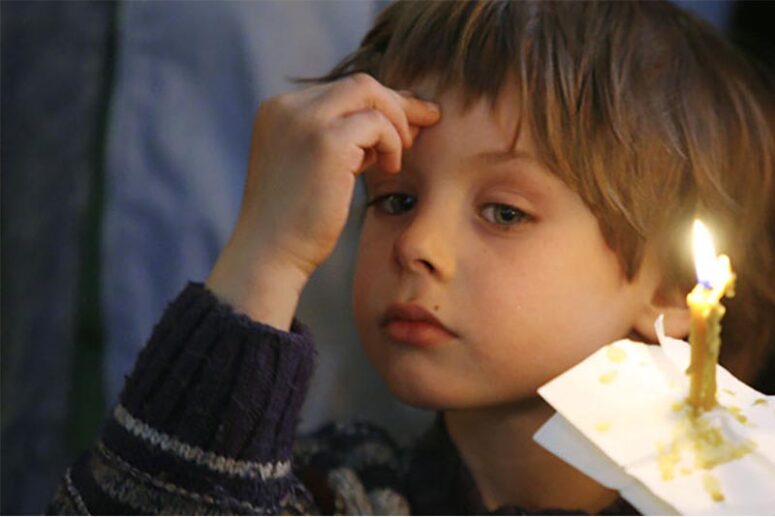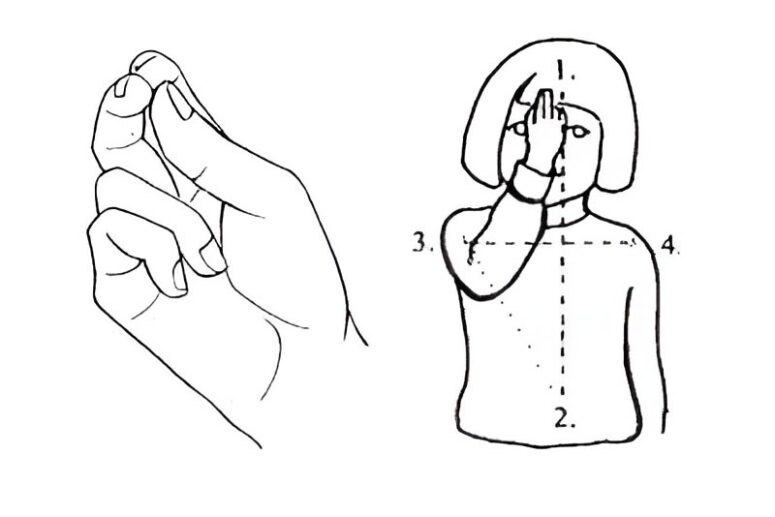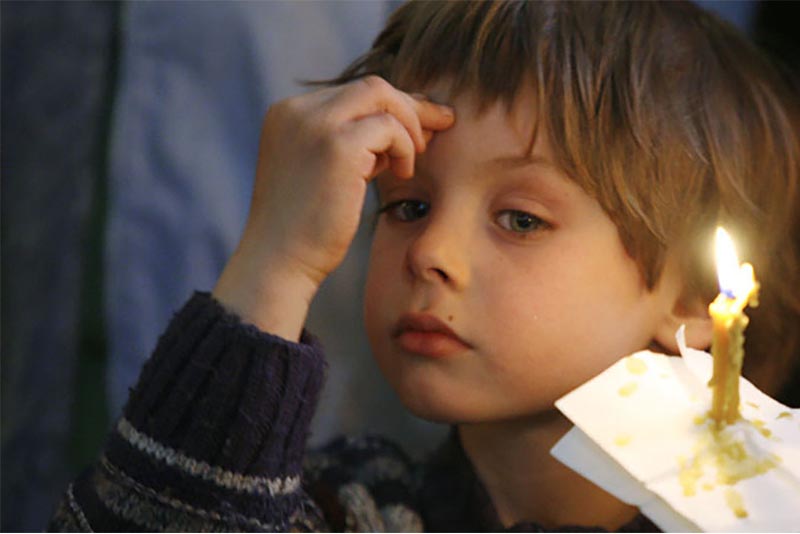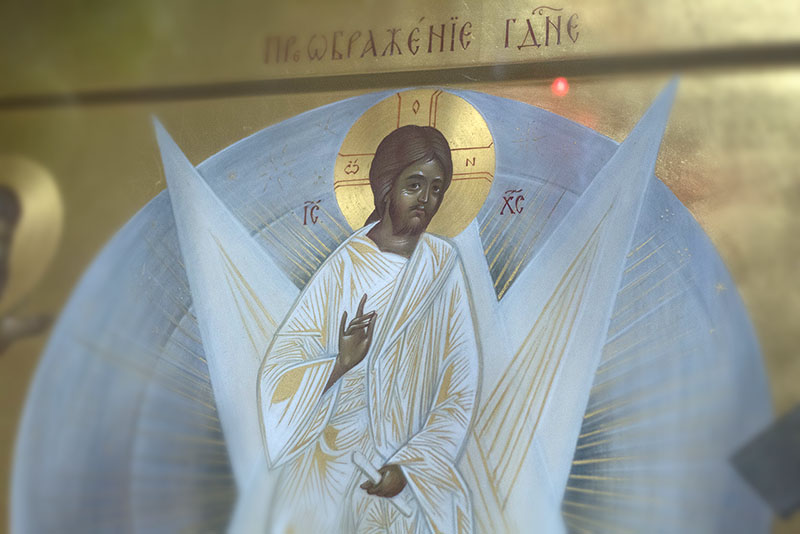
The sign of the holy cross is a symbol steeped in profound meaning and history, a gesture that varies in significance and practice across different Christian denominations. This article explores the symbolism and meaning behind the sign of the cross, tracing its origins back to the ancient Church. We delve into the proper way for an Orthodox Christian to cross themselves, the appropriate prayers to recite during this act, and the occasions when the sign of the cross should be made in church. Additionally, we address whether it’s fitting to make the sign of the holy cross in public places, how Christians from other denominations practice this gesture, and common mistakes associated with it. Join us as we answer these questions and more, offering insight into the diverse practices and interpretations of the sign of the cross in various religious contexts.
Sign of the Cross – Symbolism and Meaning
From the earliest days of the apostolic era, making the sign of the cross during prayer has been a revered practice, rich in symbolic significance. This gesture is more than just a traditional routine; it embodies a profound representation of mankind’s salvation, initiated by the crucifixion of Jesus Christ. When Christians make the sign of the cross, they are not merely performing a ritual but are reflecting the very symbol of salvation. The way the fingers are arranged, the specific hand used, and the accompanying words all carry deep meaning in this sacred act.
The Sign of the Cross in Orthodoxy
An Orthodox Christian begins each day with prayer and the sign of the cross, a gesture that sanctifies various aspects of life, including church services, household activities, personal moments, and family traditions. The priestly blessing itself is delivered through the sign of the cross. This leads us to ponder: what does this gesture truly represent? Why is it customary in Orthodoxy to make the sign of the cross using three fingers, and has this method always been the norm?

When did making the sign of the cross begin?
It may be surprising to learn that in the ancient Church, the practice of making the sign of the cross often involved the use of just one finger – either the index finger or the thumb – or sometimes the entire hand. Amidst pagan societies that worshipped a pantheon of gods, early Christians living among them boldly declared their belief in the One God through the sign of the cross. This early form of the gesture is referenced in the writings of St. Epiphanius of Cyprus, St. Gregory the Great, and St. Cyril of Jerusalem, who was the first to note that the sign of the cross was made “using fingers”. Yet, these historical accounts do not specify the exact manner in which the fingers were positioned or the direction of the hand’s movement. It is understood that the fingers would touch the forehead and, at different periods, other parts of the body such as the ears, eyes, lips, and heart area.
By the fourth century, the concept of the “broad cross” emerged, with Christians starting to cross their entire body. The fifth century saw the introduction of the double-fingered cross, a response to the Monophysites, who made the sign of the cross with only one finger. Upon embracing Orthodoxy, Russia inherited the Byzantine tradition of using two fingers to make the sign of the cross. It wasn’t until the thirteenth century that Byzantium began the practice of using three fingers, a method that was subsequently adopted by Orthodox Churches in other countries.
How to Do the Sign of the Cross Correctly?
In the Orthodox tradition, to answer how to do the sign of the cross correctly one must acknowledge that this practice is imbued with deep meaning. An Orthodox Christian uses the right hand, bringing the thumb, index, and middle fingers together to represent the consubstantial Trinity: Father, Son, and Holy Spirit. The ring finger and little finger are pressed into the palm, symbolizing the dual nature of Christ as both God and man. This method of making the sign of the cross is observed in Russia, Belarus, Greece, Bulgaria, Egypt, Serbia, Syria, Palestine, Georgia, and in every Orthodox Church around the world, reflecting one of the proper ways to do the sign of the cross.
How to Make the Sign of the Cross?
Orthodox Christians perform the sign of the cross from right to left, using the right hand. The ring finger and little finger are pressed to the palm, with the three remaining fingers brought together. The sequence for making the sign of the cross is as follows:
- Touch the forehead
- Then the stomach
- Next, the right shoulder
- Finally, the left shoulder

This specific manner of making the sign of the cross is deeply symbolic. By beginning making the sign of the cross on the forehead, believers are dedicating their thoughts to God, seeking His blessing and protection over their intellect and spiritual understanding. Touching the forehead signifies the sanctification of the mind. Moving to the stomach represents the sanctification of feelings and heart intentions. The gesture of moving from the right to the left shoulder symbolizes the sanctification of bodily strength. This act is not just a ritual; it’s a symbolic affirmation of one’s commitment to follow Christ.
After completing the sign of the cross, it is customary to perform a waist or full earthly bow, depending on the context of the prayer, the liturgical season such as Great Lent, and the specific prayers being recited. For instance, certain prayers during Great Lent are followed by a full earthly bow. When simply passing by a church, it suffices to make the sign of the cross and either slightly bow the head or make a waist bow.
How Should One Pray When Making the Sign of the Cross?
Orthodox Christians often accompany the making of the sign of the cross with a prayer. This reverent gesture is particularly linked with invoking the Holy Trinity. A common practice is to begin morning or evening prayers at home by making the sign of the cross, with the prayer: “In the name of the Father, and of the Son, and of the Holy Spirit.”
The act of making the sign of the cross should be done with deep reverence and without rush. As one brings their hand to the forehead, they say, “In the name of the Father.” The hand is then lowered to the stomach while reciting, “And the Son.” The gesture continues by moving the hand to the right shoulder, saying “And the Holy,” and concludes on the left shoulder with “Spirit.”
This practice of the sign of cross prayer is rooted in the veneration of the Father, the Son, and the Holy Spirit, the One and Indivisible Trinity. It signifies the beginning of any endeavor, particularly prayer, as a way to sanctify the act and seek divine guidance and blessing.
When to Make the Sign of the Cross in Orthodox Worship?
Newcomers to Orthodoxy often worry about the proper etiquette in church, particularly about making the sign of the cross at the right times without drawing undue attention. In truth, there is no need for anxiety. When one is in the presence of God, praying and crossing oneself should be guided by the heart’s call. For those who feel uncertain, a simple guideline is to cross themselves when others around do. This practice can help clarify many aspects, such as making the sign of the cross when passing a church, determining the number of times to cross oneself before venerating relics, or deciding whether to cross oneself before receiving Holy Communion. In the absence of other parishioners, the order of service provides guidance for both the priest and the congregation.
It is customary to cross oneself in the following situations:
- Upon seeing the church
- Before entering the church
- Upon entering the church
- During the divine service
Traditionally, upon entering the church, an Orthodox Christian makes the sign of the cross before the icon on the central analogion and kisses it.
During a worship service, it is appropriate to make the sign of the cross:
- At the words “In the name of the Father, and of the Son, and of the Holy Spirit.”
- While chanting the Creed at “I believe in one God the Father Almighty,” “and in one Lord Jesus Christ,” and “…and in the Holy Spirit, the Lord, the Giver of Life.”
- At “By the power of the most venerable and life-giving Cross of the Lord.”
- At the commencement of the Apostles’ Epistles or the Parables.
- When hearing “Christ our true God.”
- During “Glory to God in the highest.”
- At the troparion “Save thy people, O Lord.”
- When reciting “Lord, have mercy” and “Amen.”
- At “More honourable than the Cherubim.”
- Whenever the priest crosses himself.
- Making the sign of the cross before the gospel reading is also a significant moment in the service.
Should I Cross Myself in Public Places?
The decision to cross oneself in public is a deeply personal one. It’s important to introspect on the motive behind the action: Why do we cross ourselves? Is it a mere ritual, or does it stem from a soulful need? Whether it’s when praying on a bus, seeing a church on the street, or mentioning God in conversation, if the act of crossing oneself arises from an inner calling, it is entirely appropriate. Demonstrating one’s faith in God openly should never be a source of embarrassment. However, if the gesture is performed for show or as a form of reproach towards others, it risks harming not only one’s soul but also the souls of those around. When making the sign of the cross, it’s an expression of faith in Christ, but it should always be accompanied by good intentions and a well-meaning heart.
Crossing oneself at home is always fitting. It is vital to make the sign of the cross in tandem with prayers before sleeping and upon waking, before and after meals, when leaving the house, before undergoing surgery, and in general, before and after any significant activity or challenge. This gesture is a way of expressing gratitude to God for all things.

The Sign of the Cross as Our Defence against Evil
St. John Chrysostom emphasized that the Sign of the Cross should be made not merely mechanically with a finger, but with a heartfelt disposition and faith.
The Sign of the Cross is instrumental in bringing the soul into a state of reverence before prayer. It is an invocation of God’s power to sanctify the mind and heart, cleansing it of impure thoughts and desires often incited by demonic influences. The sign of the cross is akin to a blaze that drives away demons, as attested by numerous accounts.
Parents can cross their children, offering a blessing when they go to bed or head to school. It’s also customary to cross new items or food after purchasing them, to make the sign of the cross over the road before traveling, and to bless the baby carriage before placing a child in it. Many cross themselves when boarding an airplane or cross their cars before driving and when leaving them in a parking space. Crossing oneself upon seeing an ambulance or a fire truck is a way of sending prayers for those in unknown peril, expressing a sincere wish for their swift deliverance from trouble. Before retiring to bed, it is advisable to cross oneself, as well as the bedroom walls, pillow, and bed. Faithfully made, the sign of the cross can even halt an aggressive dog. However, it must always be remembered that this action holds the power and meaning of prayer, and should not be reduced to superstition. It is unnecessary to cross one’s mouth when yawning, food that has already been blessed by a priest, or objects in the church like Holy water or icons.
How Many Religions Make the Sign of the Cross?
Within the Christian faith, the practice of making the sign of the cross varies across denominations, each adopting a distinctive method. These variations can be seen in the direction in which the sign is made — some cross themselves from right to left, while others do so from left to right. Additionally, there are differences in how the palm and fingers are positioned during this act.
The Old Believers, for instance, join the index and middle finger, keeping them straight, with the remaining fingers pressed to the palm. Despite this difference, the essence of the sign of the cross among Old Believers aligns with the practice observed by other Orthodox Christians.
Catholics, on the other hand, make the sign of the cross using the whole palm and move from left to right, contrary to the right-to-left motion seen in Orthodoxy. The use of the entire palm, representing the five wounds of Christ, is symbolic in Catholicism. In Orthodoxy, such a representation is regarded more as a ritual embodiment of the cross rather than a dogmatic statement.

As we explore what religions make the sign of the cross, it’s evident that while the gesture is shared across Christian denominations, its execution reflects a diversity of theological interpretations and traditions.
What are the Typical Mistakes in Making the Sign of the Cross?
When making the sign of the cross, certain practices are considered incorrect and should be avoided. These include crossing oneself with just two fingers, using the left hand, employing the whole palm, or doing so carelessly, jokingly, and without a sense of reverence. It is also a common mistake to bring the hand only down to the chest above the solar plexus after touching the forehead. Visualizing the Orthodox cross reveals that its lower part should be longer than its upper part, guiding the proper movement of the hand.
However, it’s important to remember that the sign of the cross holds the weight of prayer. Therefore, making it automatically, or casually during idle conversation, is inadmissible.
Exceptions exist, of course. For instance, if a person has an injury to the right hand and crosses with the left hand reverently, it is not considered a sin. Similarly, if a newcomer to Orthodoxy accidentally crosses from left to right but does so with a sincere prayer, it will be accepted by God. After all, while traditions may have evolved over time, the core principles remain unchanged: pure faith, love for God, and a commitment to following Christ.
For everyone who makes the sign of the cross and identifies as a Christian, these principles are of paramount importance.

Sign of the Cross FAQ
Do Baptists Make the Sign of the Cross?
In Baptist traditions, the sign of the cross is not a common practice. While not explicitly prohibited, it is rarely observed in Baptist worship and rituals.
Do Anglicans Make the Sign of the Cross?
Anglicans, as well as Episcopalians and Lutherans, often incorporate the sign of the cross in their church services. The practice of making the sign of the cross in the Anglican Church is quite prevalent, reflecting a blend of traditional and contemporary worship styles.
In denominations such as Reformed, Presbyterian, and Methodist, ministers may make the sign of the cross during certain ceremonies, although it is not a regular part of their worship.
As for other Protestant denominations, the sign of the cross is neither strictly prohibited nor widely practiced. Its use in these communities is quite rare, reflecting diverse theological perspectives on this ancient Christian symbol.
How Do the Orthodox Make the Sign of the Cross?
Orthodox Christians make the sign of the cross by joining their thumb, index, and middle fingers to represent the Holy Trinity and pressing their ring finger and little finger to the palm. They touch their forehead, stomach, right shoulder, and then left shoulder, moving from right to left with their right hand.
How to Make the Sign of the Cross in the Roman Catholic Church?
In the Roman Catholic Church, the sign of the cross is made using the entire palm with all five fingers extended to symbolize the five wounds of Christ. The gesture moves from the forehead to the chest, then from the left shoulder to the right.
Is Making the Sign of the Cross a Catholic Thing?
Making the sign of the cross is not exclusively a Catholic practice; it is a common ritual in various Christian denominations, including Orthodox, Anglican, and Lutheran traditions, albeit with some differences in execution.
Is Making the Sign of the Cross a Prayer?
Yes, making the sign of the cross is considered a form of prayer. It is a physical manifestation of prayer that symbolizes sanctification and protection, invoking the Holy Trinity.
Is Making the Sign of the Cross Biblical?
While the specific gesture of making the sign of the cross is not directly mentioned in the Bible, it is a tradition that has evolved from early Christian practices and beliefs. It is seen as a symbolic representation of faith in Christ and the Holy Trinity, rooted in the broader Christian tradition.




